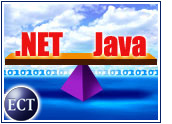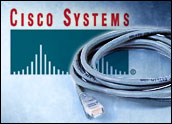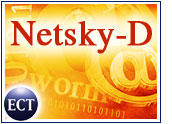
IBM has unveiled new grid and autonomic computer services that, according to Bruce Williams, the company’s general manager of integrated technology services, will “bring together industry specific business consulting knowledge with advanced technology skills … [to help] companies … improve core business processes that are critical to their success and growth.”
IBM said it has coupled business experts from IBM Business Consulting Services and IBM Global Services with technology experts at IBM Research. Their goal is to help Big Blue’s enterprise customers make heterogeneous environments work together and exploit available resources, Al Bunshaft, vice president of grid sales at IBM, told the E-Commerce Times.
Bunshaft said Friday’s announcement served as a formalization and delivery of packaged sets of services for its customers that either are using grid computing services already or are planning to adopt such a strategy.
Fusion Road Map
Andrew Efstathiou, program manager for technology management strategies at the Yankee Group, told the E-Commerce Times that IBM’s announcement marks the company’s fairly new push toward the fusion of different capabilities within IBM to solve business problems.
“Now [IBM] is integrating [its] technology offerings with [its] business-consulting capabilities,” Efstathiou said, noting that IBM is growing its capability to solve business problems with its technology offerings. Grid and autonomic computing are some of the options being used to more efficiently solve problems for customers.
For his part, Bunshaft said IBM’s new autonomic services mark the evolution of systems management technology, while its grid services do the same for distributed computing.
Increasing Productivity
Bunshaft said the new services will help IBM’s customers increase their productivity so that they can get their goods and services to market faster, become more competitive and provide additional IT and business dimensions.
One of the new services listed, “IBM Grid Value at Work,” uses an assessment methodology that helps customers analyze in detail the total cost of ownership (TCO) and provides a road map for determining the maximum business advantage to be gained by deploying a grid setup.
According to Bunshaft, people are turning to grid and autonomic computing because of its efficiency, low TCO and business value. In some cases, certain business processes that once took 18 hours now take as little as 30 minutes, he said.
Computer, Heal Thyself
Both grid and autonomic computing are potential money-savers because they offer the ability to harness computers so that they work better together, Efstathiou said. Grid computing transforms many computers into one large virtual computer, while autonomic computing enables self-healing within computers, much in the way people eventually self-heal after getting hit by a baseball bat.
Although computers generally cannot survive being clobbered by a Louisville Slugger, autonomic computing allows them to work according to a similar principle, Efstathiou said. Certain software can identify problems and work to correct them without relying on an IT person to direct it.
For his part, Bunshaft said that autonomic computing allows computing networks and grids to stay and remain available, recover from problems, and adapt to problems by adjusting the computing environment.
Works-in-Progress
Efstathiou went on to say that grid and autonomic technologies are still works-in-progress. However, these technologies offer a good level of value today as developers continue to add new features and functionalities.
According to Efstathiou, full realization of these technologies’ potential probably will take another five years to come to fruition. IBM’s partnerships with outside providers, such as grid software maker Data Synapse, will help it move toward that goal.













































Social Media
See all Social Media